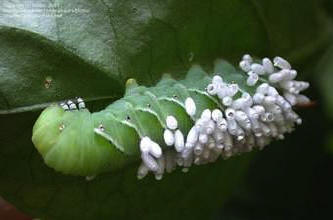
(6/28) "My mom threw your caterpillar in the grass when you weren’t looking." Ella’s gargantuan blue eyes got even bigger. "I think I wasn’t supposed to tell you that." I could only laugh and appreciate finally having the answer to what had happened to the tomato hornworm caterpillar that got lost in my car two years ago.
It was summertime. I had been in the tomato patch and found the largest tomato hornworm I’d ever seen in my life. So often, I see the evidence of their presence (missing foliage and poop, also known as frass) but I can’t find the camouflaged, chewing, destroyer. On this lucky day, I found him.
The temptation to put him in a paper bag and take him to the pool was irresistible. I had to show curious children his enormous mandibles and explain how they move sideways instead of up and down like ours. I felt compelled to share that this caterpillar would one day become a sphinx moth. They marveled at my find- and it’s mandibles. Unfortunately, I didn’t account
for the fact that jaws so strong could easily chew through the paper bag I’d chosen to use as his holding pen. This is how I lost a caterpillar in my car.
 It could have turned out differently….if that caterpillar had been found by a braconid wasp first. Braconids are small parasitic wasps that feed on hornworms. The adult female lays her eggs under the surface of the unsuspecting hornworm’s skin. She uses a special piece of equipment, called an ovipositor, to lay
her eggs. As an aside, ovipositors are commonly referred to as stingers. This means, of course, that male bees and wasps have no stingers. Anyway, eggs hatch out and feed on the caterpillar from the inside. Once they are ready to pupate, the larvae emerge from the skin and form white cocoons on the outside of the body. If I’d seen white cocoons on my hornworm, I would
have left him in my tomato patch– one, because it would be dead- and two, the emerging wasps would go on to parasitize more hornworms.
It could have turned out differently….if that caterpillar had been found by a braconid wasp first. Braconids are small parasitic wasps that feed on hornworms. The adult female lays her eggs under the surface of the unsuspecting hornworm’s skin. She uses a special piece of equipment, called an ovipositor, to lay
her eggs. As an aside, ovipositors are commonly referred to as stingers. This means, of course, that male bees and wasps have no stingers. Anyway, eggs hatch out and feed on the caterpillar from the inside. Once they are ready to pupate, the larvae emerge from the skin and form white cocoons on the outside of the body. If I’d seen white cocoons on my hornworm, I would
have left him in my tomato patch– one, because it would be dead- and two, the emerging wasps would go on to parasitize more hornworms.
As luck would have it, I found the hornworm first, got a little too excited, and as a natural consequence of my actions, lost an enormous hornworm in my car. It was unlucky to lose that thing in my car. For weeks, and months, I kept my eyes open for it, fully expecting a horrific smell to overtake my van- something even worse than my van’s usual malodor. Finally, after
two years passed, I got my answer.
Historically, the sight and smell of my van’s interior has offended adults and children alike. Ella’s mom, Anne, has compassion for me due to my lack of home and car management skills, so she offered to help me clean my van. While my back was turned, she found the hornworm dangling from the bottom of one of the seats. Knowing that I would have tried to take it home to
feed to my chickens, she swiftly tossed it in the grass, instructing her daughter with sign language for SHHH.
My hope for your tomato patch this summer is that the braconid wasps find the tomato hornworms before you. For the sake of your family, I hope that if you do find them, you will not choose to put them in a paper bag and take them to the pool for show and tell. If you don’t have a friend as nice as mine, the story might not end so well for you.
Read other articles about insects & garden pests
Read other articles by Susie Hill